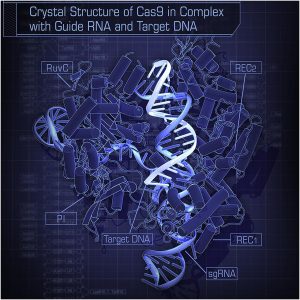In 1998, I published a piece in First Things titled “Science and Design.” In it I offered the following prediction about junk DNA:
But design is not a science stopper. Indeed, design can foster inquiry where traditional evolutionary approaches obstruct it. Consider the term “junk DNA.” Implicit in this term is the view that because the genome of an organism has been cobbled together through a long, undirected evolutionary process, the genome is a patchwork of which only limited portions are essential to the organism. Thus on an evolutionary view we expect a lot of useless DNA. If, on the other hand, organisms are designed, we expect DNA, as much as possible, to exhibit function. And indeed, the most recent findings suggest that designating DNA as “junk” merely cloaks our current lack of knowledge about function. For instance, in a recent issue of the Journal of Theoretical Biology, John Bodnar describes how “non-coding DNA in eukaryotic genomes encodes a language which programs organismal growth and development.” Design encourages scientists to look for function where evolution discourages it.
Even when I wrote this in 1998, biologists should have seen the writing on the wall that junk DNA wasn’t really junk, as my reference to the JTB article shows. So I saw this statement less as prediction and more as simply describing how things seemed to be unfolding. But in the first decade of the new millennium, evolutionists like Richard Dawkins (The Greatest Show on Earth, 2009) and Francis Collins (The Language of God, 2006), along with many fellow Darwinists, doubled down on junk DNA being a proof of Darwinian evolution and a refutation intelligent design.
Then came ENCODE, the Encyclopedia of DNA Elements, with its 2012 announcement that even though much of our DNA doesn’t code for proteins, such non-coding genetic material is nonetheless overwhelmingly functional. By the second decade of the new millennium, what could be considered junk DNA had shrunk precipitously, and evolutionary biologists were trying to retell history so that it didn’t reflect badly on Darwinism and didn’t reflect well on intelligent design (as Casey Luskin recounted in his article “Post-ENCODE Posturing: Rewriting History Won’t Erase Bad Evolutionary Predictions.”) John West even explicitly cited ENCODE as vindicating my 1998 prediction (see his “Darwin and ‘Providential Design’“).
The biggest thing in biology in the last decade has been the discovery of CRISPR gene editing in bacteria (used by bacteria to disable viruses) and the ability of biologists to harness these bacterial editing tools to edit the genes of eukaryotic cells, and thus the cells that make up humans. There’s no good evolutionary story of how the CRISPR system arose by Darwinian processes (even though, in deference to Darwin, the language of “bacteria evolving the CRISPR system” is everywhere in the biological literature). Much less is there a good evolutionary story for why this system should be so readily repurposed for eukaryotic gene editing (such “foresight” of nature could readily make a new chapter in Marcos Eberlin’s Foresight: How the Chemistry of Life Reveals Planning and Purpose). I suspect a good case can be made for the intelligent design of the CRISPR system, but that’s best left to biologists with the specialized knowledge to make such a case.
The prediction I want to offer in this brief piece, however, concerns what we are likely to see if we start using CRISPR to edit the germ line of humans (and other animals, but I’ll focus on humans). Once it became clear that CRISPR gene editing (especially with the Cas9 enzyme) could be used to edit the genes of humans, and in particular the genes in the germ cells of humans, scientists working in this area began to voice moral qualms as well as hushed enthusiasm.
Such changes would give biologists the power to direct human destiny. Heady stuff. But the power to play God has dangers. Such changes could become permanent, locked into the human germ line. That may not seem like a bad thing for therapeutics and prevention, as in eliminating sickle cell disease or Huntington’s disease, where the genetic mistakes are clear and correctible. But that would only be the beginning, not the end.
What about gene edits designed not to eliminate disease but rather to enhance existing traits and functions? Such traits and functions would be perfectly normal and yet might be preferred in an enhanced form, such as height or intelligence. Therapy/prevention is one thing, but enhancement is another. CRISPR biologists such as Jennifer Doudna, Feng Zhang, and George Church thus began to raise red flags about enhancement. Yet the line between therapeutics and enhancement can be blurry: is a male who would be 4 feet 10 inches without some sort of genetic intervention being cured of a disease-like condition or being enhanced by adding six inches to his stature? What about someone who is 5 feet 6 inches getting an extra 6 inches? What about someone who is 6 feet 2 inches getting an extra 6 inches?
Given the human impulse to control nature with technology (an impulse especially evident in our age), it’s hard to imagine CRISPR not being used to produce enhancements in humans (consider militaries who want more effective soldiers, parents who want more beautiful and smarter children, governments who want more pliable citizens, etc.). One also sees the language of “taking charge of evolution” everywhere in discussions of CRISPR gene editing. Thus, we are told that CRISPR gene editing will for the first time give humans the power to take control of the evolutionary process.
Most who use such language see this newfound genetic power of CRISPR gene editing as a way to accelerate evolutionary change, making us bigger, faster, stronger, smarter, prettier, etc., and doing so much more quickly than the pokey pace of evolution by natural selection would allow. This is an interesting attitude because pokey-paced Darwinian evolution is also said to have produced the CRISPR gene editing system in the first place. So is natural selection smarter than we are, able to move evolution forward more effectively than we can (whatever it may mean for an undirected form of evolution, which is not supposed to have any telos, to move us forward)? Or are we, if not smarter than evolution as a whole, in a position to take a handoff from evolution and now, with CRISPR gene editing, do a better job than natural selection, at least from our place in natural history?
As it is, intelligent design has always regarded the creative potential of natural selection as minimal. At the same time, CRISPR gene editing, because it is a genetic technology used by human biologists to achieve specific ends, will always be an example of intelligent design. The big question, then, is whether CRISPR gene editing will allow for huge improvements of human and other animal forms via genetic enhancements. My prediction is that it won’t. Specifically, I predict that attempted enhancements of the human germ line using CRISPR gene editing will (1) quickly hit an “enhancement boundary” beyond which enhancements are no longer feasible and (2) prove self-canceling in the sense that intended benefits will be undone by unintended deficits.
From an intelligent design perspective, the human genome represents a holistic design that is a constrained optimization involving various tradeoffs. Like a car or house, one can only make so many changes before one undoes the original design and renders the thing one is tinkering with a gothic monstrosity. Take a VW bug. You can put a Ferrari engine in it, but now you have a chassis that can’t handle the strain of all the torque that the engine is putting out. Also, the new engine will now be sticking out in a strange way.
Sure, you can now change the chassis. And you can modify the body to reduce the wind resistance. And you can make the suspension tighter. And you can change the wheel rims to accommodate high performance racing tires. But before long you no longer have a VW bug. Perhaps the more radical CRISPR gene editing biologists see in this analogy not a refutation of unbridled CRISPR enhancement but an invitation to use CRISPR to create a new species of humans. But there’s no evidence for this pipedream.
Instead, it seems that CRISPR gene editing will simply tinker with existing human traits, pushing them in various directions, and staying within certain bounds, just as a custom auto-body shop can only do so much to an existing automobile. Now it might be argued that within those bounds quite a bit could still be done. But even here I have my doubts, and my prediction is that any step forward is likely to be countered by a step backward. Sure, there are genetic diseases, such as Huntington’s, which can rightly be regarded as genetic mistakes and which CRISPR gene editing may do us the service of removing (wonderful that would be). But with enhancements, we’re talking about improving traits and functions that on their own terms are doing just fine (they are not malfunctioning).
From a intelligent design perspective, however, if humans represent a good design by a competent designer (much more competent or skilled than we are, even armed with CRISPR), then attempts to improve this design are destined not just to hit an enhancement boundary but also to backfire by leading to unexpected deficits. For instance, what if adding 6 inches to height leads to circulatory problems or a lack of coordination? What if increasing intelligence (if genes that make for greater intelligence even exist or can be identified) leads to greater obsessive-compulsiveness? What if improving creativity leads to bipolarity?
I’m not saying that, in nature, increased height is correlated with increased pulmonary problems or intelligence with OCD or creativity with bipolarity. I don’t know. But I am saying that when we monkey with nature by doing CRISPR gene editing, we may see such correlations so that one step forward here leads to one step backward there. This is the prediction, and we’ll see. Also, I’m not saying anything about the societal impact of CRISPR changing the distribution of traits in the human population, which also may lead to unexpected and unhappy consequences (immediately, perhaps, because CRISPR enhancements will first go to the rich, exacerbating concerns over inequality and privilege).
I therefore frankly doubt that CRISPR gene editing (and indeed all gene editing technologies) in the hands of humans will lead to benefits unhampered by deficits. This doubt, however, hinges not just on the view that a designer of immense intelligence has created us, and so we, with our very limited intelligence, will be hard-pressed to improve on this design, even with such gene editing technologies. This doubt also has a more principled basis in that, from an intelligent design perspective, when designs are implemented by intelligent agents, they almost always involve multiple coordinated changes.
Coordination is the watchword of intelligent design in the same way that incrementalism is the watchword of (Darwinian or unguided) evolution. With evolution, advantages need to be cumulated incrementally so that, at each point in the evolutionary process, additions of new structures entail improvements in existing functions or benefits from some newly emerging functions. Applied to biochemical systems, Michael Behe’s concept of irreducible complexity shows that such incrementalism is spectacularly unsuccessful. The point to appreciate in the present discussion, however, is that all that talk of humans building new and improved humans with CRISPR gene editing is simply an application of this incrementalism from evolution.
The reason CRISPR gene editing is stuck with incrementalism rather than the much more powerful coordination is that we don’t understand the genome holistically, and thus can’t implement the coordinated changes needed to significantly advance the design of humans. This is not a failure of CRISPR gene editing technology, but rather a failure by us to understand the holistic design of our genetic code, and our resulting inability to implement it in ways that can change us substantially for the better.
Right now, when one reads about CRISPR gene enhancements, it’s as though one is reading a menu at a restaurant: I’ll take one female, at least 5 foot 8 inches, with an IQ of 130 or more, a great metabolism, a strong musculature, and blond hair. To which CRISPR gene editing, at the hands of our best scientists, both now and into the future, would say: here’s a female embryo into which we substituted a gene for greater height, another gene for higher IQ, etc. But all such changes will be isolated and incremental. Absent the coordination that is the hallmark of intelligent design, this can never work.
To sum up, from an intelligent design perspective, there is no compelling reason to think that CRISPR gene editing will constitute an enhancement tool for building superior humans. Quite the opposite: there are compelling reasons to think that CRISPR gene editing will fail as an enhancement technology. Leaving off clear genetic defects, which can be viewed as genetic accidents that occurred over the course of natural history, I predict that CRISPR-based genetic enhancements will backfire, with deficits counterbalancing or perhaps even outweighing benefits, so that people at the end of the day will avoid them because of the uncertainty and ill effects they bring.


